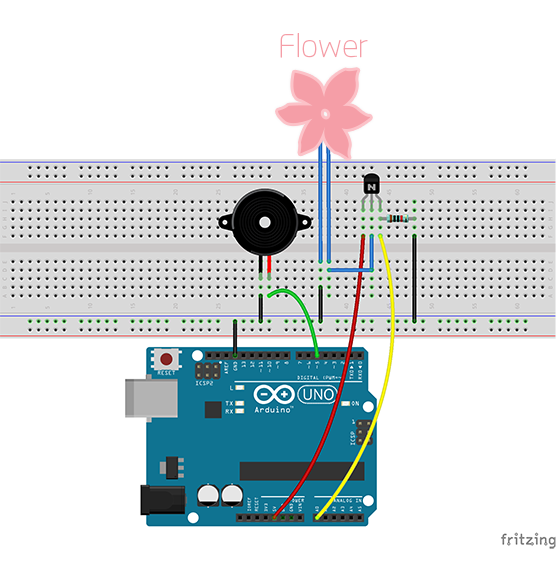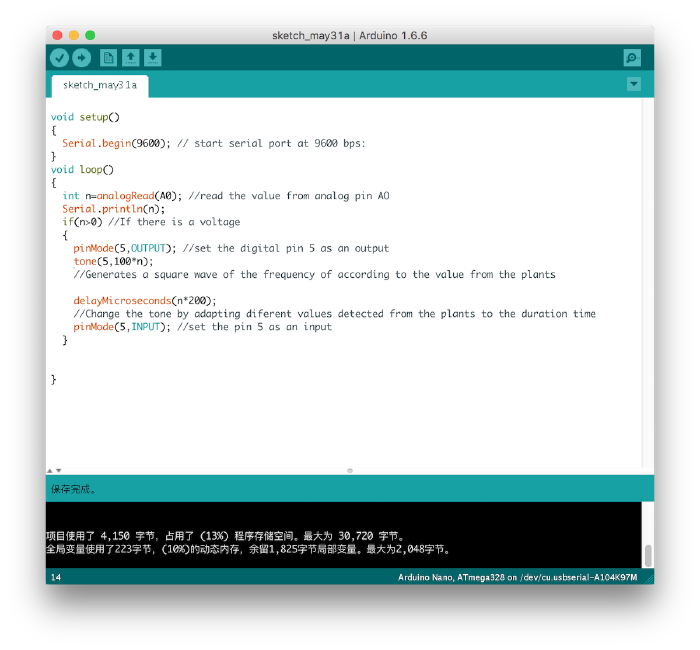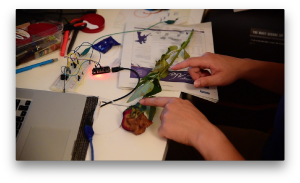GMU:Bioelectronics, aesthetics and other interesting things/Di Yang: Difference between revisions
| Line 37: | Line 37: | ||
'''Arduino code:''' | '''Arduino code:''' | ||
[[File:Arduino-flower.png]] | [[File:Arduino-flower.png | 700px]] | ||
== Experiments with plants == | == Experiments with plants == | ||
Revision as of 14:47, 2 June 2016
Hear the whisper of flowers
As we all know, there are lots of languages of flower that we human write for them. For example, Daisy: Innocence and Tulips: Love, Fame,etc. So, these words and sentences are created by man and why not let the flowers speak for themselves ?
So, my idea is to use the circuit of plant sensing, which involves arduino, to set up a installment consisting of different types of flowers. So when they are touched by people, they can speak for their own. I am curious to see, if they are speaking the same language or not. And I also want to see how the languages change from the bud to wilting. And the data I get from the arduino will be sent to processing to create corresponding fractals.
Time-Lapse: Watch Flowers Bloom Before Your Eyes [1]
Circuit
I use another circuit different from the ones we have seen in the course to amplify the signals, but the basic principle is the same. I also put a passive speaker on the breadboard, so this installment has no need to rely on the external speaker.
Components:
- 1*Arduino board
- 1*Breadboard
- 1*USB cable
- Jumper wires
- 1*Passive buzzer
- 1*Resistor(10KΩ)
- 1* NPN Transistor S8050
- Plants
Arduino code:
Experiments with plants
1. Rose
I connected the circuit with the rose to see the conductivity of a single twig and how the sound would change based on which part i touched. Below are two videos showing the results.
2. Freesia
3.


